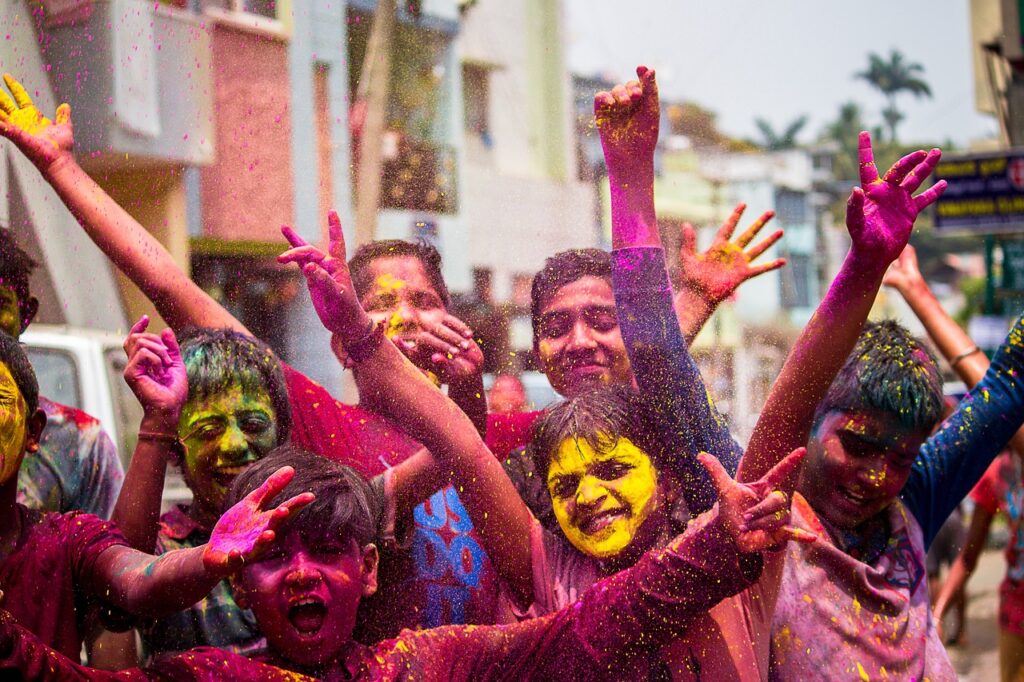Holi, known as the Festival of Colors, is one of India’s most exuberant celebrations. This vibrant festival, steeped in ancient traditions and cultural significance, is a jubilant expression of joy, unity, and the triumph of good over evil.
A Celebration of Spring and Renewal
Holi heralds the arrival of spring, symbolizing new beginnings and the rejuvenation of nature. It’s a time when people shed the gloom of winter and embrace the vivid hues of spring.
The Play of Colors
The most iconic aspect of Holi is the play of colors. People splash each other with colored water and smear vibrant powders, known as ‘gulal,’ on each other’s faces. This playful exchange breaks down barriers of age, gender, and social status, fostering a sense of equality and unity.
Cultural and Mythological Roots
Holi has deep cultural and mythological roots, associated with various legends. The most popular is the legend of Prahlad and Hiranyakashipu, symbolizing the victory of faith and goodness over arrogance and evil.
Traditional Foods and Festivities
The festival is also marked by the preparation of traditional sweets and dishes like ‘gujiya’ and ‘thandai.’ Families and friends gather to feast, dance, and enjoy music, creating a lively and joyful atmosphere.
A Message of Harmony and Love
Holi carries a powerful message of harmony, love, and the importance of relationships. It’s a time to forgive, mend broken relationships, and express affection and gratitude towards loved ones.
Conclusion
Holi in India is not just a festival; it’s a vivid expression of life itself. It’s an occasion that transcends the mere play of colors, embodying the spirit of joy, togetherness, and the celebration of life’s vibrant spectrum. For those who participate, Holi offers a chance to immerse in the richness of Indian culture and experience the unifying power of joy and color.






